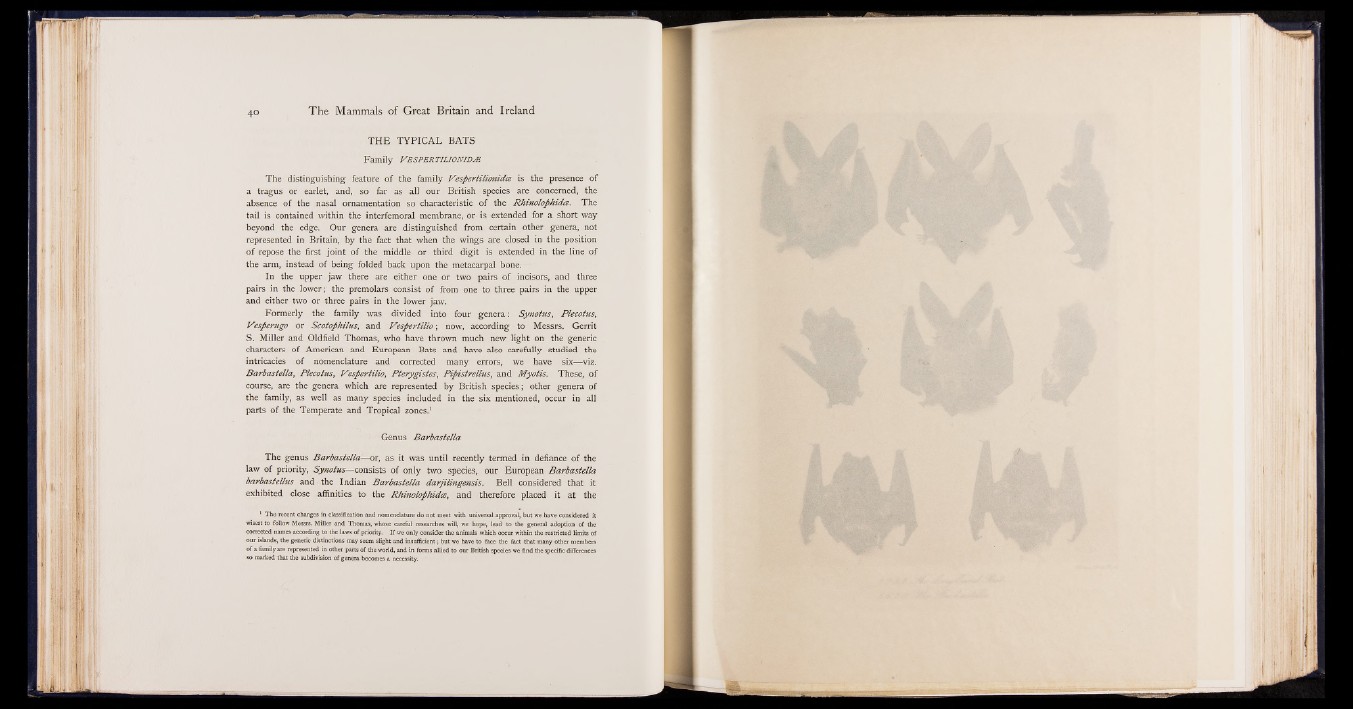
TH E TY P ICA L BATS
Family VESPER TILIONIDM
The distinguishing feature of the family Vespertilionidce is the presence of
a tragus or earlet, and, so far as all our British species are concerned, the
absence of the nasal ornamentation so characteristic of the Rhinolophidce. The
tail is contained within the interfemoral membrane, or is extended for a short way
beyond the edge. Our genera are distinguished from certain other genera, not
represented in Britain, by the fact that when the wings are closed in the position
of repose the first joint of the middle or third digit is extended in the line of
the arm, instead of being folded back upon the metacarpal bone.
In the upper jaw there are either one or two pairs of incisors, and three
pairs in the lower; the premolars consist of from one to three pairs in the upper
and either two or three pairs in the lower jaw.
Formerly the family was divided into four genera: Synotus, Plecotus,
Visfierugo or Scotopkilus, and Vespertilio; now, according to Messrs. Gerrit
S. Miller and Oldfield Thomas, who have thrown much new light on the generic
characters of American and European Bats and have also carefully studied the
intricacies of nomenclature and corrected many errors, we have six— viz.
Barbastella, Plecotus, Vespertilio, Pterygistes, Pipistrellus, and Myotis. These, of
course, are the genera which are represented by British species; other genera of
the family, as well as many species included in the six mentioned, occur in all
parts of the Temperate and Tropical zones.1
Genus Barbastella
The genus Barbastella— or, as it was until recently termed in defiance of the
law of priority, Synotus— consists of only two species, our European Barbastella
barbastellus and the Indian Barbastella darjilingensis. Bell considered that it
exhibited close affinities to the Rhinolopkidce, and therefore placed it at the
The recent changes in classification and nomenclature do not meet with universal approval, but we have considered it
wisest to follow Messrs. Miller and Thomas, whose careful researches will, we hope, lead to the general adoption of the
corrected names according to the laws of priority. If we only consider the animals which occur within the restricted limits of
our islands, the generic distinctions may seem slight and insufficient; but we have to face the fact that many other members
of a family are represented in other parts of the world, and in forms allied to our British species we find the specific differences
so marked that the subdivision of genera becomes a necessity.